Regarding Mexican food, tamales might be one of the most beloved contributions to the culinary world. Though the tamal is ancient (estimated to date back to 8,000 BC!) it still deserves your attention. But what is a tamale? And where does it hail from? Here, we’re diving into all things Mexican tamales, from how to make them and where to eat them in Mexico to offering a tamale recipe or three to try.
As food lovers and travel planners who specialize in Mexico travel planning, we spend a lot of time researching the culinary history of the country. Over the years we have cooked with Mexican chefs, done food tours and market visits around the country, and so now we’re sharing that with you!
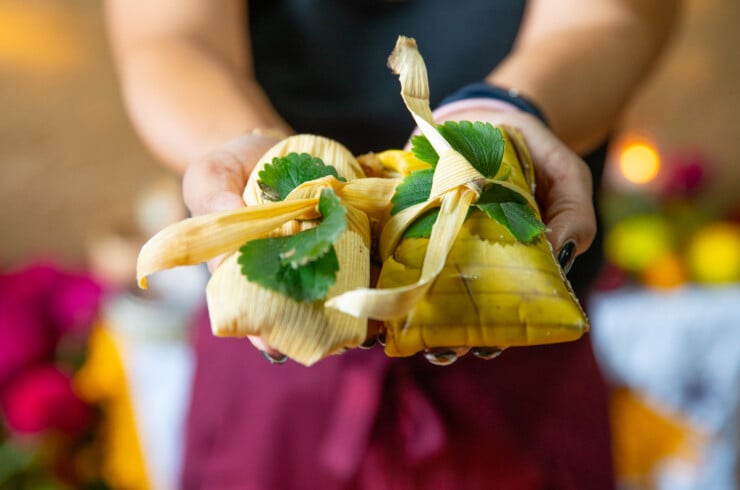
What Is A Tamale?
A tamale (aka tamal in Spanish) is a traditional dish that dates back to Mesoamerican times. It is made with masa, a treated corn dough that can or cannot be stuffed, and is wrapped in a banana leaf, plantain leaves, or corn husk and then steamed.
Though many consider a tamale a traditional Mexican dish, it can be found throughout the Americas. Even so, tamales play a significant role in Mexican culture. Making and eating them brings families together, especially during special occasions and the holiday season, from the Day Of The Dead to Las Posadas and Christmas.
Wait. Is It A Tamal? Or A Tamale?
Before we go further, note that the word “tamal” is used in Spanish to refer to the food in its singular form and it originates from the Nahuatl word tamalli. It gets confusing because we use “tamale” for the singular in English, but, in both languages, the plural is “tamales.”
Here we may use “tamal” or “tamale” depending on the context when referring to the food in its singular form. Got it? Good. Let’s continue.
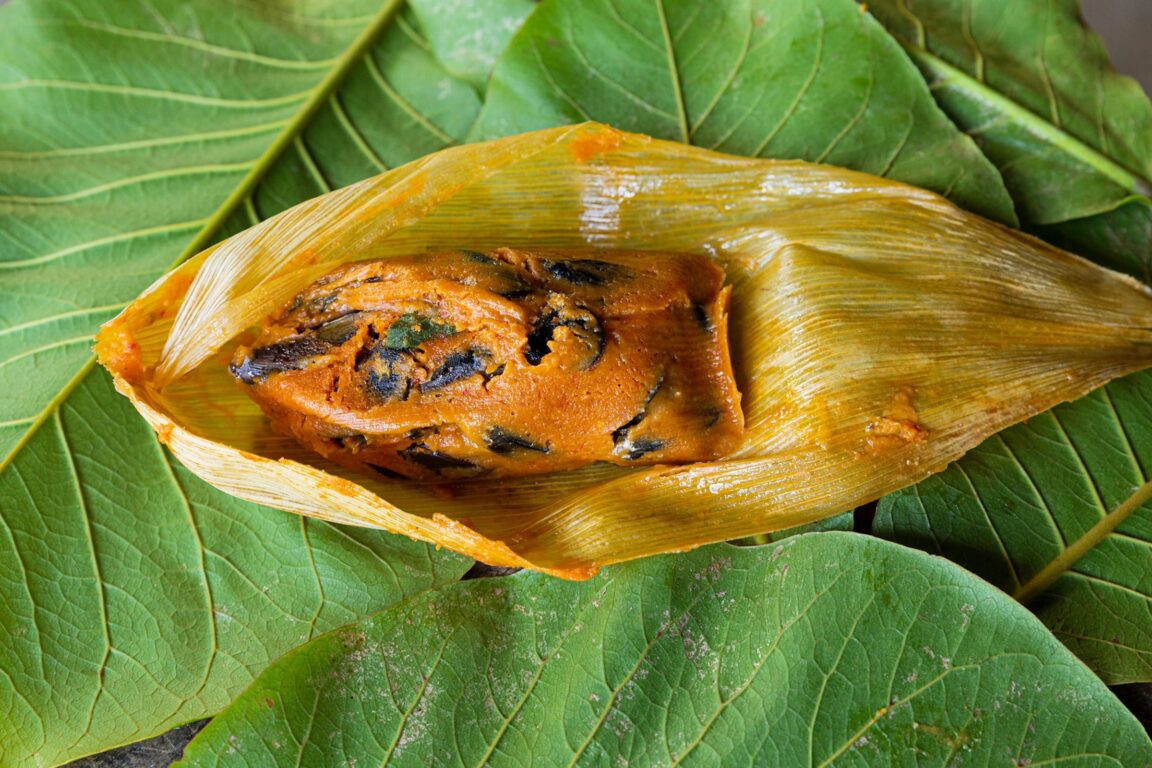
A Brief History of the Tamal
As we discussed when we talked about dishes from Mexico that date back to Pre-Hispanic times, a tamale is made from nixtamalized corn dough (aka corn soaked in calcium hydroxide). This treated corn flour is known as masa harina and is combined with hot liquid and fat (be it lard, vegetable oil, or butter) to make a dough mixture that can be stuffed or mixed with meat, salsa, veggies, or sweet ingredients.
People of ancient Mesoamerican cultures (like the Aztecs and Maya) stuffed the corn-based tamal with animal proteins and plants from the region like turkey, frog, squash, and beans. Historians say Aztecs preferred the portable foodstuff as pre-war fuel and that tamales were also prepared for religious and spiritual purposes.
It is believed tamales predate the Aztec language itself with tamales’ origins estimated to go as far back as 8,000 BC to 5,000 BC. This tracks since the Aztec, Olmec, and Mayan cultures considered corn a central part of their origin story.
You Can Thank The Spanish For Pork Tamales
Arguably, the best-known are pork tamales, but relative to the history of tamales, they’re relatively new. The Spanish arrived in the 1500s and introduced animals whose proteins and lard (mostly pork) are common tamale fillings today: pork, chicken, and beef. They also brought Catholicism, which probably explains how tamale-making in Mexican communities is closely linked with religious holidays like Christmas and Candlemas.
By the 1870s, tamales spread to the American South, including parts of California. In Los Angeles, vendors sold tamales on the streets, while in Mississippi, the tamale evolved into a spicier, sometimes fried twist of its Mesoamerican and Mexican origins — the hot tamale. Today, you’ll find tamales everywhere across Mexico and other Latin American countries, including Guatemala, Costa Rica, and the United States.
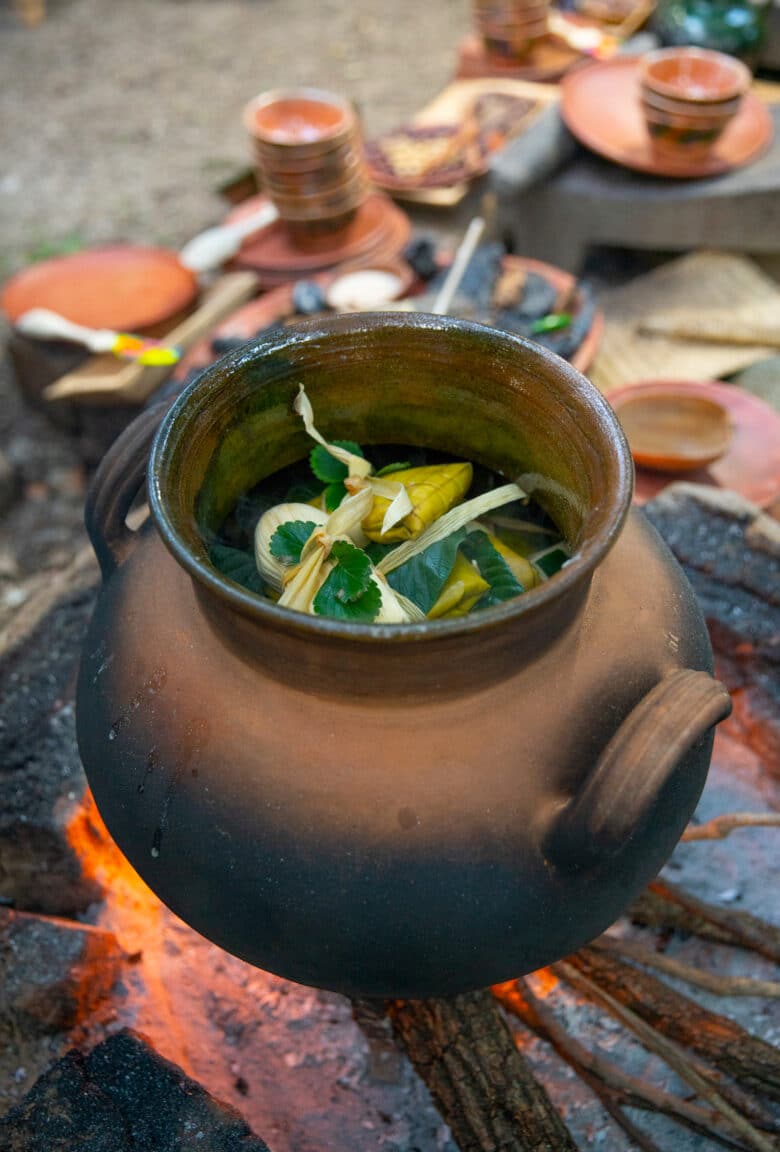
Regional Tamales of Mexico
When it comes to “Tamales Mexicanos,” the varieties of authentic Mexican tamales are pretty much endless. Differing ingredients and preparation styles reflect Mexico’s regional culinary diversity. Savory fillings options feature any combination of shredded pork, beef, or chicken spiced and flavored with chiles, moles, and cheeses. Essential Mexican ingredients like squash blossoms and pepitas also make an appearance. Tamales nejos do not have a filling. Sweet tamales or tamale dulces include dried fruits, nuts, and spices like cinnamon and piloncillo. Here are a few of the distinctive flavor of tamales you’ll find in Mexico:
- Oaxaca: In Oaxaca, traditional tamales known as Oaxaqueños are often stuffed with chicken and mole negro (a complex sauce that includes various peppers, nuts, and cacao) and wrapped in banana leaves.
- Nayarit: In Nayarit’s western coastal region, you will find that the favorite filling is shrimp and tomatillos.
- Veracruz: Veracruz is an eastern state located along Mexico’s Gulf Coast. Tamales in this region are wrapped in banana leaves, can approach 12 feet long, and are cooked underground.
- Yucatan: In Mexico’s southeastern Yucatán region, achiote adds an orange tinge, and orange juice adds tang.
When and Where to Eat Tamales in Mexico
Like tortillas and beans, tamales are part of a daily meal in Mexico and are often eaten as a complete meal. Though, as we mentioned, they are front and center during Mexican holidays and celebrations. More often than not, you’ll find them sold by street vendors. During Christmas, tamales are paired with the corn-based hot chocolate drink champurrado—a sweeter version of another traditional drink, atole.
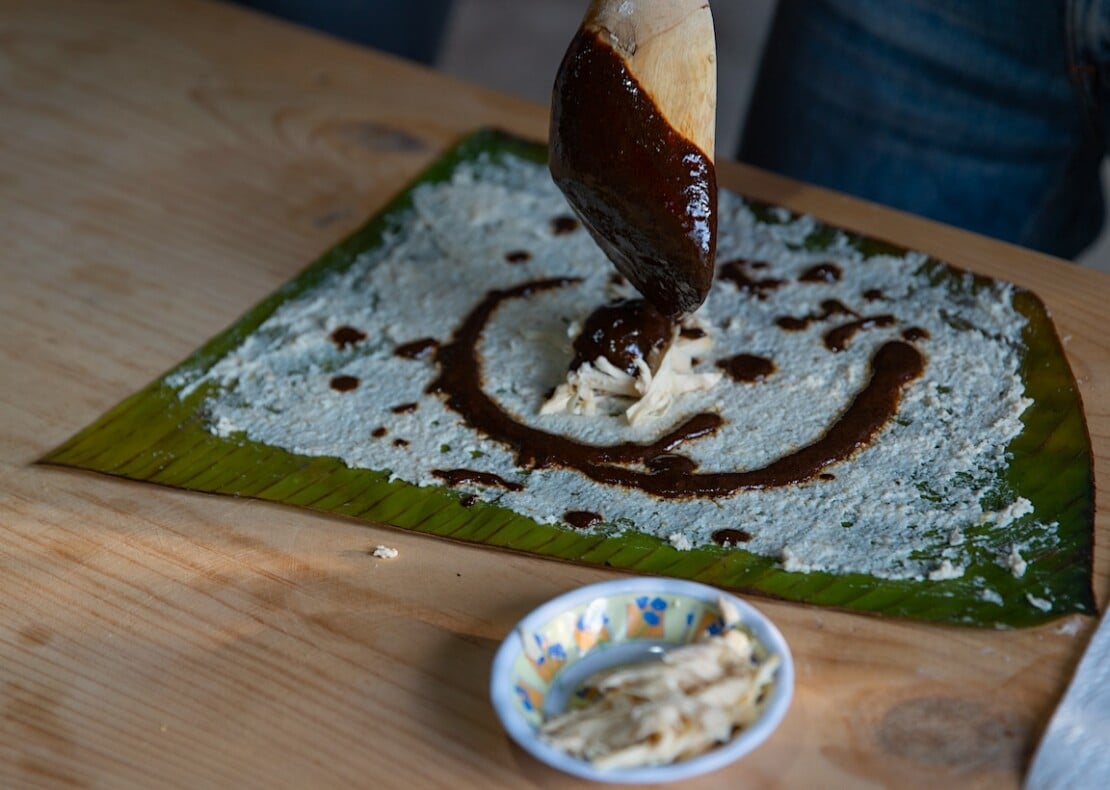
How to Make Homemade Tamales
The thing about tamales is they’re easy to devour yet time-consuming to make. That’s often why you see family and friends involved in the process. Most of the work involves assembling tamales rather than preparing the ingredients. As such, it’s common for families and friends to gather during celebrations and holidays—otherwise known as tamalada—to make enough tamales to freeze for another occasion. Here is an overview of how tamales are made:
- Soak The Corn Husks: Assuming you use a corn husk wrapper, they must soak in hot water until pliable. This can be done up to a day ahead.
- Prepare The Filling: Prepare fillings well ahead of time! For our poblano chile tamales for chicken tamales or those with pork shoulder, at least a part of the complete filling can and should be made earlier so you can concentrate on the assembly and cooking at a separate time.
- Make The Dough: Creating these stuffed and steamed corn dough pockets begins with corn masa or cornmeal dough. You can buy premade masa dough from a Mexican market or make it yourself. If you are going to simply stuff the tamales, you can use the pre-made masa. However, if your finished tamales have the ingredients mixed in (i.e., how we have done for our sweet potato tamales), you’ll want to make it yourself. In each of our recipes, we explain the exact technique for making the dough. As with everything, it starts with quality flour, and our pick is Masienda, which helps make for a delicious filling. The goal is to make the dough as light as possible, which we find is best achieved with a stand mixer.
- Assemble: You’ll then spread the rich corn dough on the corn husk (or other wrapper), pile on the delicious fillings, and then fold it up and secure it closed.
- Steam The Tamales: Then, arrange each tamal in the bottom of a steamer pot or tamale cooker and steam until cooked through, anywhere from 20 to 60 minutes, depending on the size and the fillings.
Get A Personalized Travel Itinerary
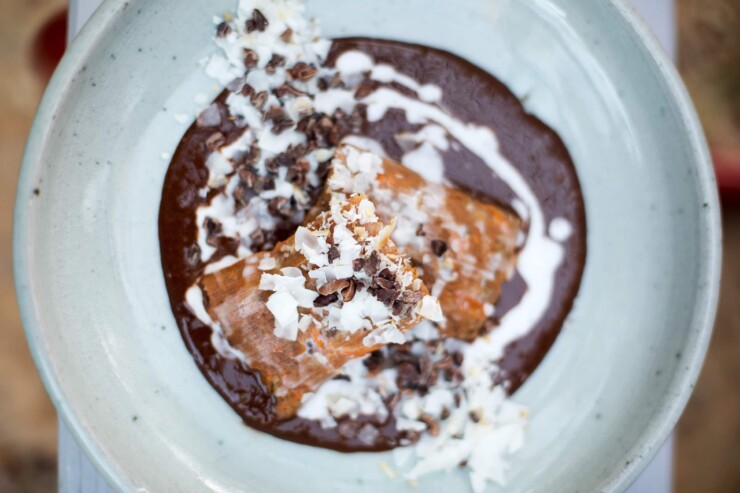
Tamale Recipes To Try
All this talk of tamales probably has you hungry. Try your hand at making them yourself with a delicious tamale recipe such as:
- Spiced Sweet Potato Tamales With Chocolate Sauce Recipe
- {Tamales De Rajas Con Queso} Poblano Chile Rajas Tamales Recipe
- {Tamales de Elote} Easy Mexican Sweet Corn Tamales Recipe
Are Tamales Gluten Free?
Finally, are you wondering, ‘Are tamales gluten-free?’ Because the tamale’s traditional base is made of masa flour (a type of corn flour), traditionally, a tamale is gluten-free.
Have Us Plan Your Mexico Trip
Now that you’ve got your foundational tamal knowledge, head to Mexico to taste them for yourself! Our travel planning services are here to help you have the ideal vacation.
1 thought on “What Is A Tamale? 7 Facts About Mexico’s Best Dish”
Howdy friend,
Great work here, really liked your explanation, I sent it to a coworker to help explain what tamales are. That said and I am just being picky, tamal (in singular) doesn’t have that “e” as tamales (plural). I understand spanish is weird and rules don’t make sense to anglo speakers. Have a great day!
Rudy